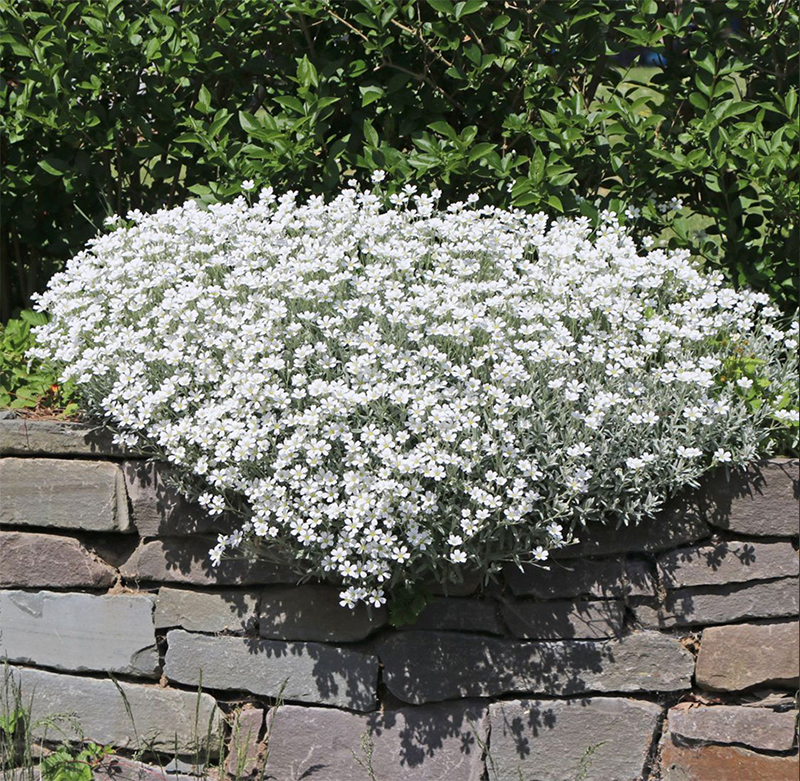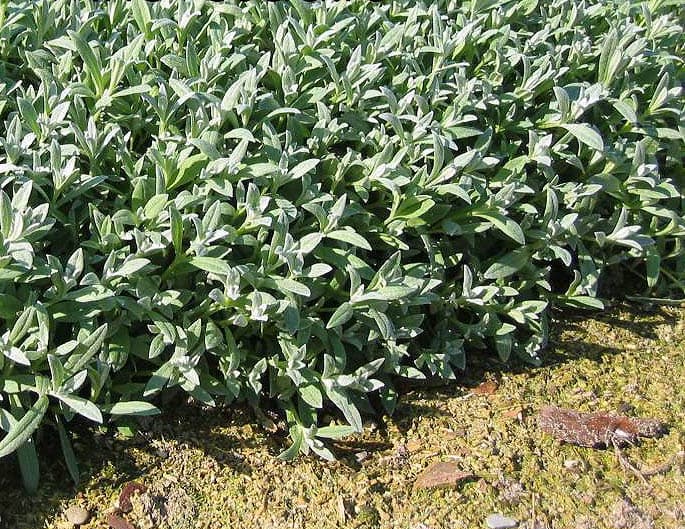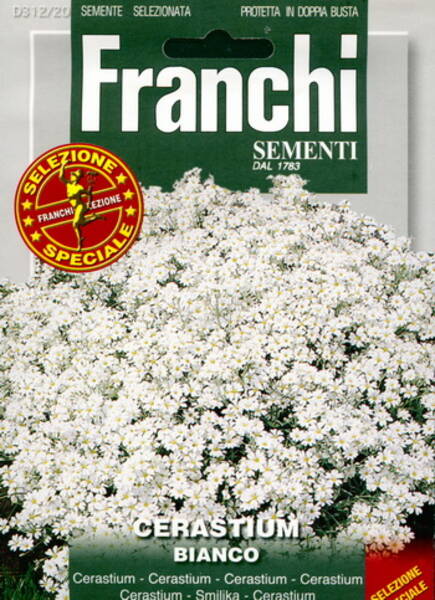A white carpet every year as early as May!
A perennial groundcover herbaceous plant that forms dense cushions. Creeping stems, flower stalks 15-20 cm tall.
Leaves are sessile, linear, small. Flowers white, 1.5-2.0 cm in diameter, collected in inflorescences. Transplant every 3-5 years, otherwise the decorative appeal of the cover decreases.
Divide clumps in early spring.
Used in low borders, rock gardens, on slopes.
Sow in April-May in open ground, at a depth of no more than 1 cm. After 2-4 weeks from germination, thin out or transplant seedlings at a distance of 20-25 cm.
Not demanding on soils, sun-loving.
A fast-spreading mat of silvery leaves. In early summer, the plants become entirely covered with elegant white flowers about 2 cm in diameter, as if with snow.
Will decorate a rockery, will strengthen a dry slope. The plant is low-maintenance, drought-tolerant, winter-hardy. Any well-draining soil in a sunny location is suitable for it.
To achieve the greatest decorative effect, it is necessary to renew plantings every 3-5 years.

* Origin - Crimea.
A perennial herbaceous plant, greyish due to dense pubescence, forms dense cushions. Stems creeping, flower stalks ascending, 15-20 cm tall.
Leaves sessile, linear or oblong-linear, small. Flowers white, 1.5 cm in diameter, gathered in a few-flowered, terminal semi-umbel.
Petals deeply notched at the tip into two lobes. Blooms in May-June for 25-30 days.
Fruit is a cylindrical, slightly curved capsule, opening at the apex with numerous small teeth. In cultivation since 1820.
To limit its spread, be sure to remove every new shoot. Winter-hardy without shelter.
Location: Light-loving, winter-hardy, drought-tolerant.
The optimal place for Snow-in-summer (Cerastium) is at the foot of a rock garden and in hollows between stones where the sun reaches.
Soil: Undemanding, but prefer well-drained soil.
Add crushed peat to rocky soil to help retain moisture around the roots.
Care: The poorer the soil and hotter the location, the less care is required. In spring, clear the ground under the plant. Trim back overly vigorous growth.
Propagation: By seeds, cuttings, and division. Sow in March in greenhouses, in April, or in late autumn — in open ground.
Seedlings appear in 10-15 days. Prick out seedlings into boxes, spacing them 3-5 cm apart. Plant in their permanent location in July.
Flowers in the second year. Divide clumps in early spring.
For propagation, it's convenient to first shear the plants, and then after some time, divide the low, dense clumps into parts.
It's better to transplant at least every 3-5 years, otherwise the decorative appeal of the cover decreases. Take cuttings in June. Can grow in one place for up to 5 years.
Partners: Their silvery foliage pairs well with dark-leaved bellflowers, armerias, and other plants.
Use in landscape design: Snow-in-summer is an indispensable plant for decorating garden plots and flower beds. It looks wonderful combined with calendula, daisies, narcissus, sedums, and bellflowers. It can be planted in the foreground of mixed borders, as a backdrop for purple irises and dark red tulips. It pairs well with bright pink phlox, cornflowers, and hyacinths. Snow-in-summer excellently masks landscape irregularities and flaws. It is often planted under trees, creating an airy white carpet in the garden. Snow-in-summer looks very beautiful in hanging planters or baskets, as a decoration for house facades, verandas, and gazebos.


Boreal chickweed, snow-in-summer.












